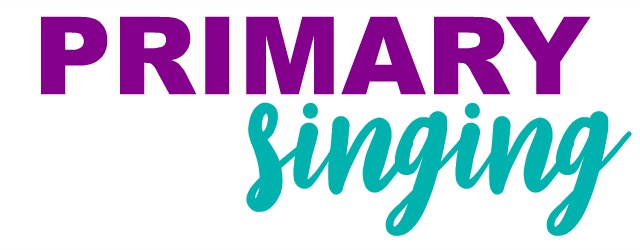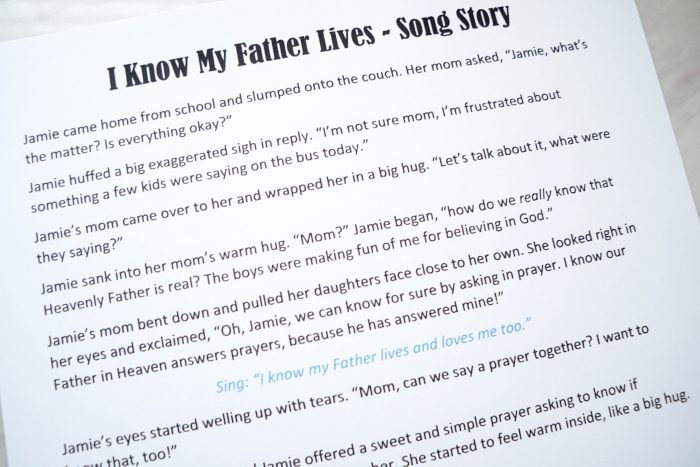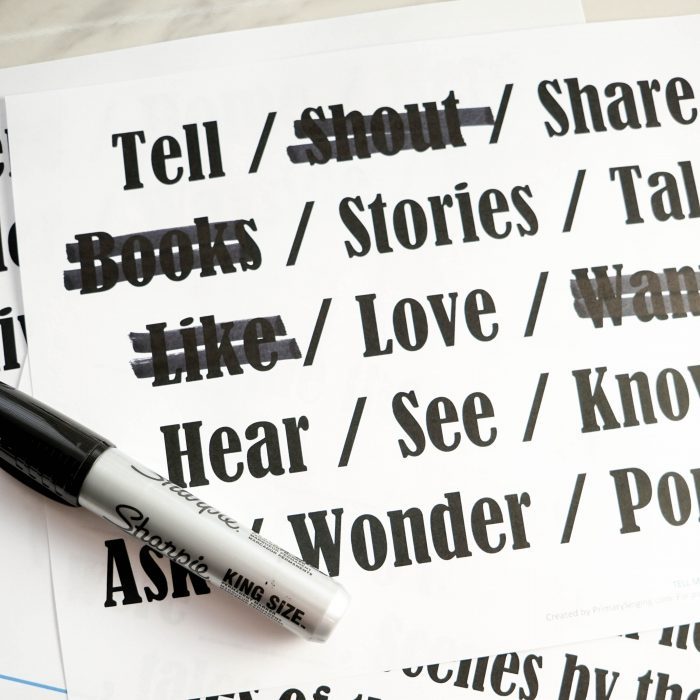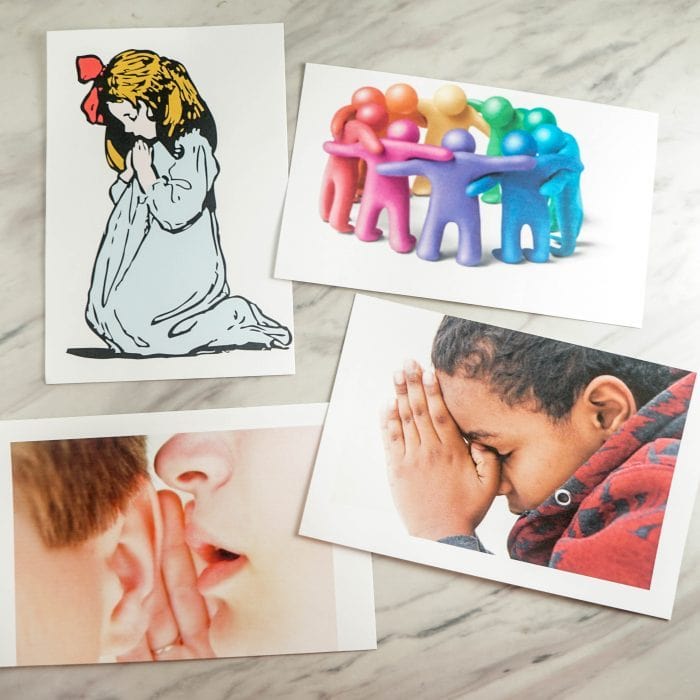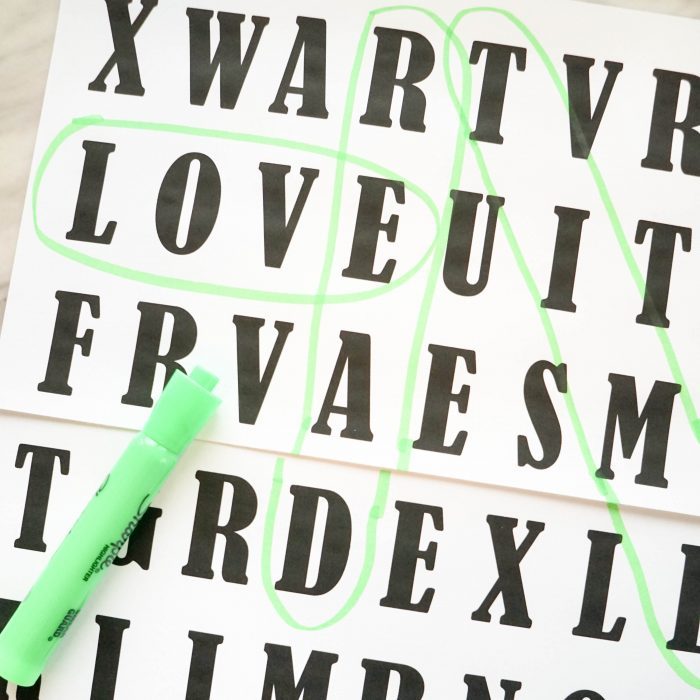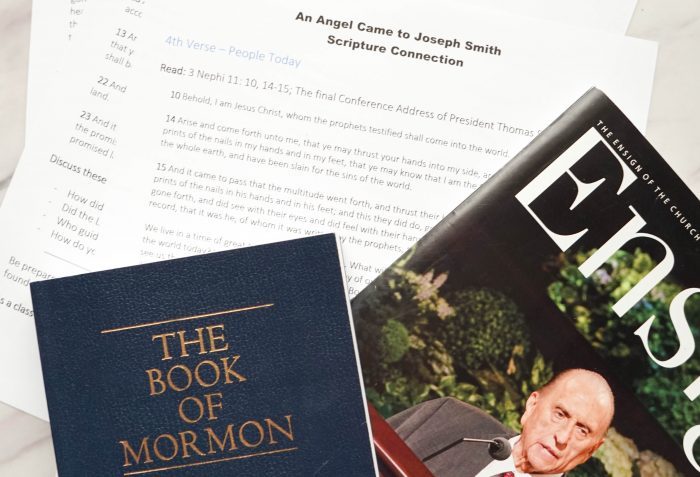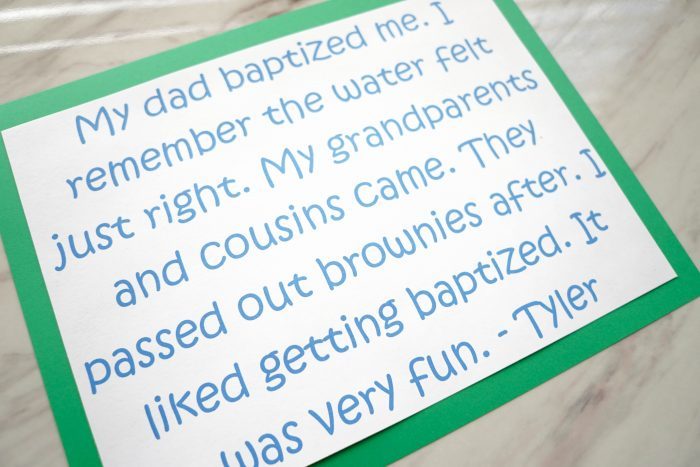Singing time can be fun and impactful at the same time! The Primary songs provide a way to easily teach children the principles of the Gospel in a meaningful way that can stick with them for life. If you’re looking for ways to teach the gospel to youth, children, and even toddlers – use music!
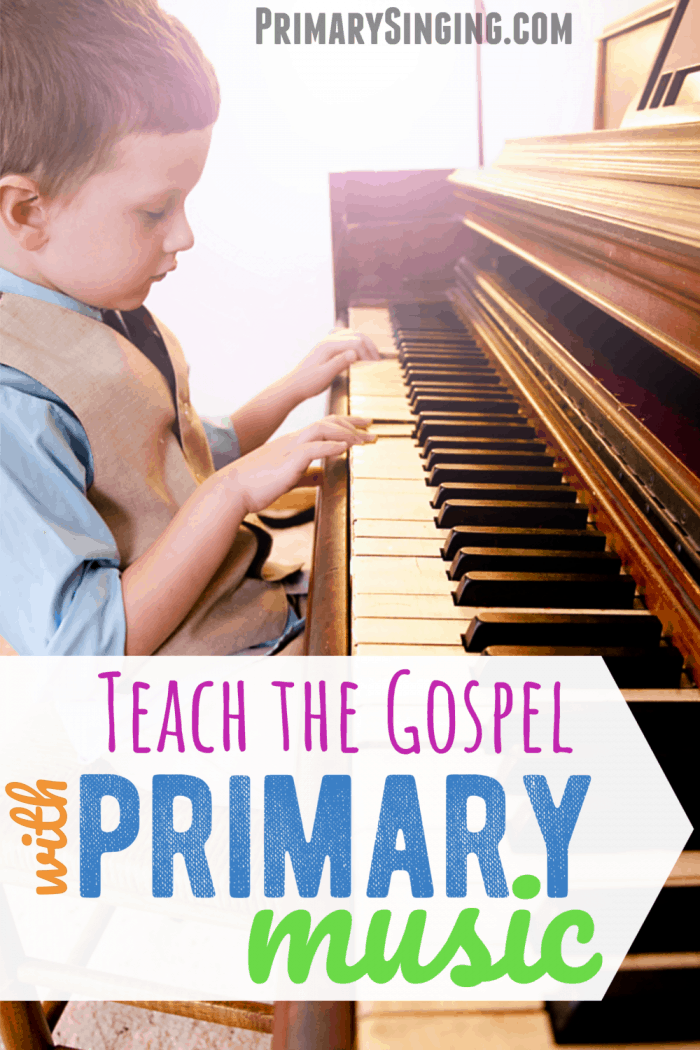
—> Click to Pin/Save This Post! <—
How to Teach the Gospel
with Primary Music
One of the best way to teach the children the gospel through music is just to sing, sing, and sing some more! But you can add some other elements to help expound on the doctrines and help the children feel the spirit while learning music. Here are some ideas I have for how to teach the gospel through Primary songs!
1. Help them Feel the Spirit
One of the best ways I’ve found to invite the Spirit is not what you might expect! I’ve found that buy having fun with an upbeat song and getting out some energy allows you to transition to a still, quiet moment that can make a huge impact!
Some of my favorite go-to ways are to play a beautiful piano version of the song (no singing needed!), using a Song Story, and bearing my testimony. These activities are really short, usually 2-3 minutes, and I can just see the children’s hearts being touched.
Check out this post on 12 Spiritual Connection Activities for Singing Time to find even more strategies for touching their Spirit in Primary.
When there’s a moment when you can sense the Spirit, be sure to point it out! The children need that reassurance and “naming” the feeling so they can be more confident in recognizing it themselves!
2. Define Words
Something as simple as defining the hard or confusing words in a song can open up a discussion with the children! Ask if anyone knows what the particular word means. If no one can help, then share with them what it means. Usually some hands will pop up with more ideas and definitions or questions.
By explaining the words, you’re helping them to more fully understand the meaning of the song and building a Gospel foundation!
3. Read the Lyrics
Singing is amazing, but sometimes you can mix it up and instead read the words! Ask the children what the song is saying. What is it talking about here? Explain the lyrics like a story or add background information to help them understand the context.
For example, if you’re singing Scripture Power the kids will love throwing their scriptures up in the air and talking about the power they feel. It can be easy to almost speed through the lyrics just to shout out with emphasis that bold phrase! But what are the lyrics teaching? Did they notice all the ways the scriptures can help?
You can challenge your senior Primary to search through the lyrics to find answers to questions or something that stood out to them to challenge them to really read and dive into the lyrics.
4. Ask & Answer Questions
Use questions to get the children thinking and making connections with the song. This will really help them make the song more personal to themselves!
For example, in Nephi’s Courage you could ask questions like:
- What was Nephi commanded to do?
- How would you feel if you were asked to do something you were afraid of or unsure about?
- How did Nephi respond when he was asked to do something hard?
- When have you been asked to do something hard?
- What does Nephi’s good attitude of being willing to do anything the Lord asked of him teach you?
- Do you go through your trials like Laman and Lemuel complaining and afraid or do you try to be like Nephi having faith and courage?
You can also take time to listen to the questions of the children or the stories they want to share. Sometimes, they may not feel relevant or applicable, but often times the children are trying to make their own connections and encourage them to share what’s in their hearts and any questions they may have!
5. Use Visuals
Many people are visual learners, and even if it’s not their primary learning style using visual aids can help paint a picture of the song. There are a lot of different ways to add visuals!
You could have the kids help draw the song giving them the challenge to interpret the lyrics, play a silent video or music video of the song, or hold up pictures that represent the different lyrics! There’s lots of ways to use visuals, we’ve shared a bunch of ideas here, too: 12 Visual Intrigue Singing Time Ideas.
6. Teach with their Learning Style
Every child learns differently so it can be really helpful to teach the Primary song in a variety of ways to reach different learning styles. This will help engage the children that may not learn with repetition or visual, for example, to find a connection to the song.
Using a variety of learning styles can also help variety to keep Singing Time interesting and build meaningful experiences with the song. It’s always fun when you can get the Primary songs stuck in the children’s heads all week long or they are eagerly seeking out the songs on their own at home!
When they come to connect with and love the song, it will be able to come back to them later in their lives when the Spirit can use the music to help them during a trial or hard time.
I give lots of ideas for including different learning styles on this landing page and connected posts!
7. Connect the song to a Gospel Principle
While teaching the song, you can certainly take a minute to very simply and easily add in Gospel instruction. You can explain the doctrine taught in the lyrics with a simple statement or a short explanation.
For example, when teaching Baptism, the second verse is sung a little backward with the reply coming before the question asked. You can point out that Jesus is explaining to Jesus, just like he taught us in the scriptures, that every person would need to be baptized. Even though Jesus was perfect, he still needed baptism as it was a commandment.
You don’t have to go in-depth, you’re simply laying the foundation and bringing in simple doctrines each week through the songs that help the children understand the concepts from a young age!
8. Tie in the Scriptures and Come, Follow Me
Each of the Primary Songs and Hymns have a connected scripture listed. You can use these, or others, to help tie the songs to Gospel instruction.
For example, you could say something like: Did you know that you can read about what happened in Gethsemane in the scriptures?
My Primary group absolutely loves singing Gethsemane. I find my 4 year old singing it all throughout the week. The other day he paused and asked, “Why did Jesus have to fight alone?” What a perfect moment to expound the profound doctrines taught in that song about what the Atonement was!
You can also easily tie in what they’ve been learning at home and how it connects to the songs you’re learning! Just ask, what does that song have to do with something you learned at home this week? Ask them about their learning and tie in the music!
9. Share Personal Stories
You can use personal examples from your own life to help show the children how the things we learn in the Primary songs aren’t just words — they can make a difference in our daily lives! They are applicable and pertinent!
You might share how you had to make a difficult choice and remembered the words to Choose the Right Way and the words, “I am learning the teachings of Jesus, they will help me and show me the way!” Maybe the song gave you the idea to read the scriptures to find an answer and they did!
Personal stories can be a great way to help the children see the hand of the Lord in their own lives and also deepen their experience with the music.
10. Bear Testimony
I try to bear my testimony about the songs I teach at least once. Since I teach the songs usually over 10-12 weeks in short 5-10 minute activities, that might mean I bear my testimony about how the song makes me feel the first week I introduce the song or share an experience that I had that relates to the song after a few weeks, or even simply bear testimony of the concepts learned in the song as we are moving on to review the song.
Your testimony can be even just 30-seconds long! Just express your own feelings and belief and you can be an “example of the believers” for the children.
What other ways to you use Primary songs to help teach the Gospel?
